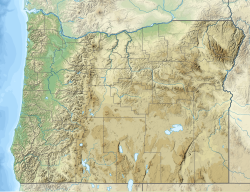| Snowshoe Formation | |
|---|---|
| Stratigraphic range: Toarcian-Bathonian ~ | |
| Type | Formation |
| Sub-units | South Fork, Warm Springs, Basey, Schoolhouse, Silvies & Weberg members |
| Lithology | |
| Primary | Mudstone, limestone |
| Other | Sandstone |
| Location | |
| Coordinates | 44°00′N119°24′W / 44.0°N 119.4°W |
| Approximate paleocoordinates | 33°48′N58°30′W / 33.8°N 58.5°W |
| Region | Oregon |
| Country | United States |
| Extent | Snake River Basin |
The Snowshoe Formation is a geologic formation in Oregon. It preserves fossils dating back to the Toarcian to Bathonian stages of the Early to Middle Jurassic period. [1] [2]

